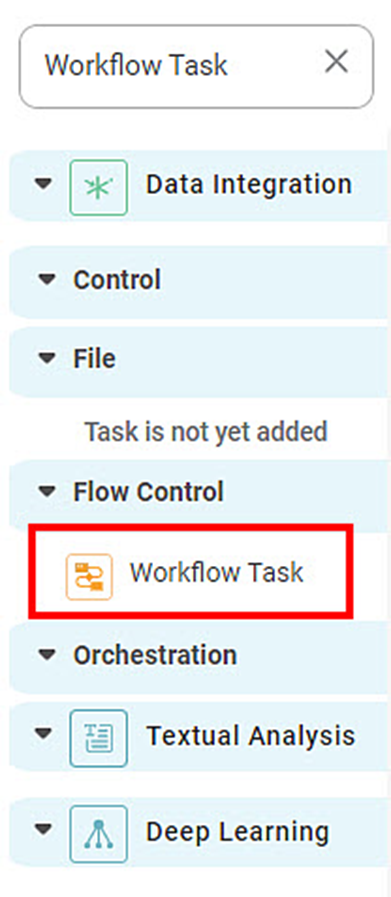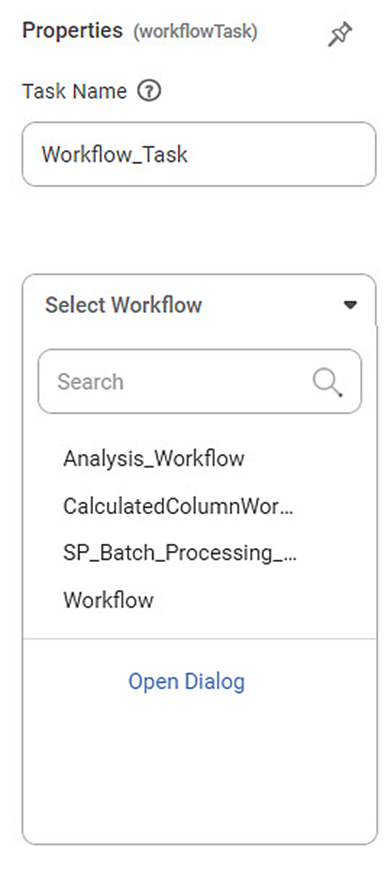Rubiscape provides a feature that enables the execution of a complete workflow inside another workflow. This helps to execute multiple workflows with a single click.
To build a recursive workflow, follow the steps given below.
- Open the Workspace where you want to create your workflow. Refer to Changing Workspace.
- Create a Workflow. Refer to Creating a Workflow.
Drag and drop Workflow Task on the canvas.
Notes:
- Workflow task does not require any predecessor or successor. It can be used without connecting to a reader or any other algorithms.
- You can connect reader nodes and other algorithm nodes to Workflow Task, if required. However, this is optional.
- Select Workflow Task.
Properties are displayed in the right pane. - From the Select Workflow drop-down, select the name of the workflow you want to execute in recursion.
- Save the workflow.
- Run the workflow. First, the workflow selected in step 6 is executed, and then the tasks in the current workflow are executed. After successful completion of all workflow execution, a confirmation message is displayed.
Notes: |
|

